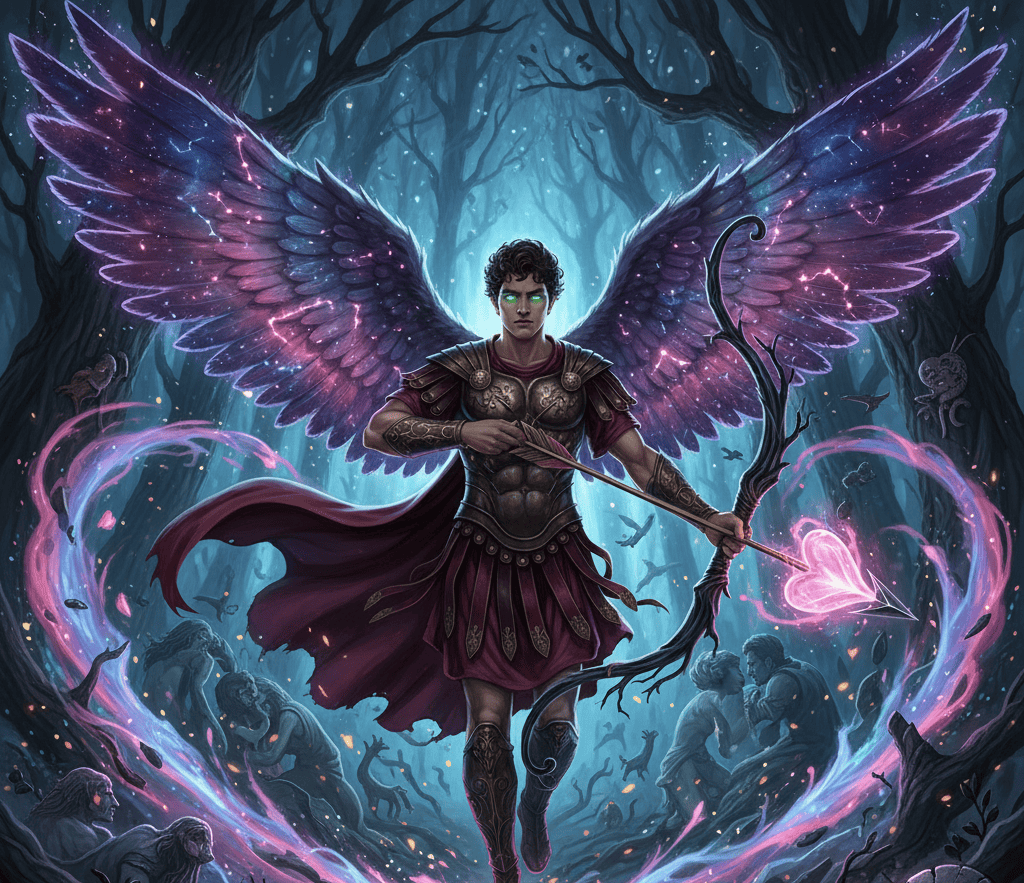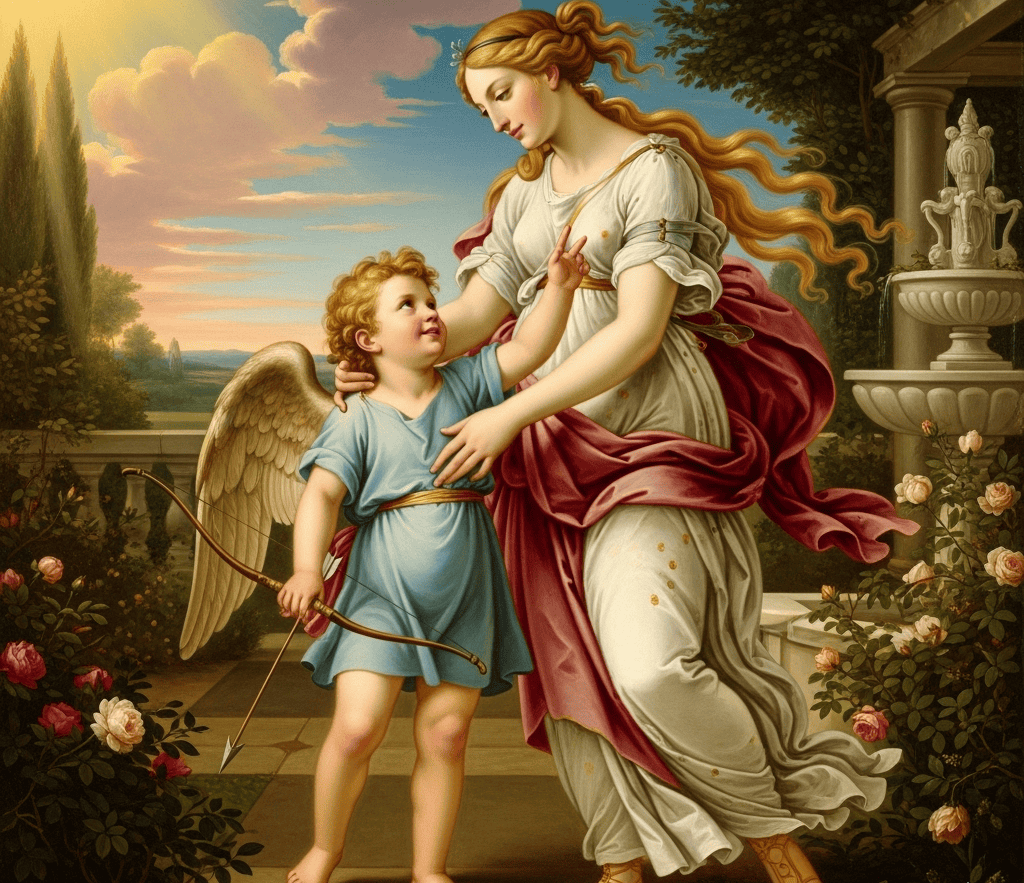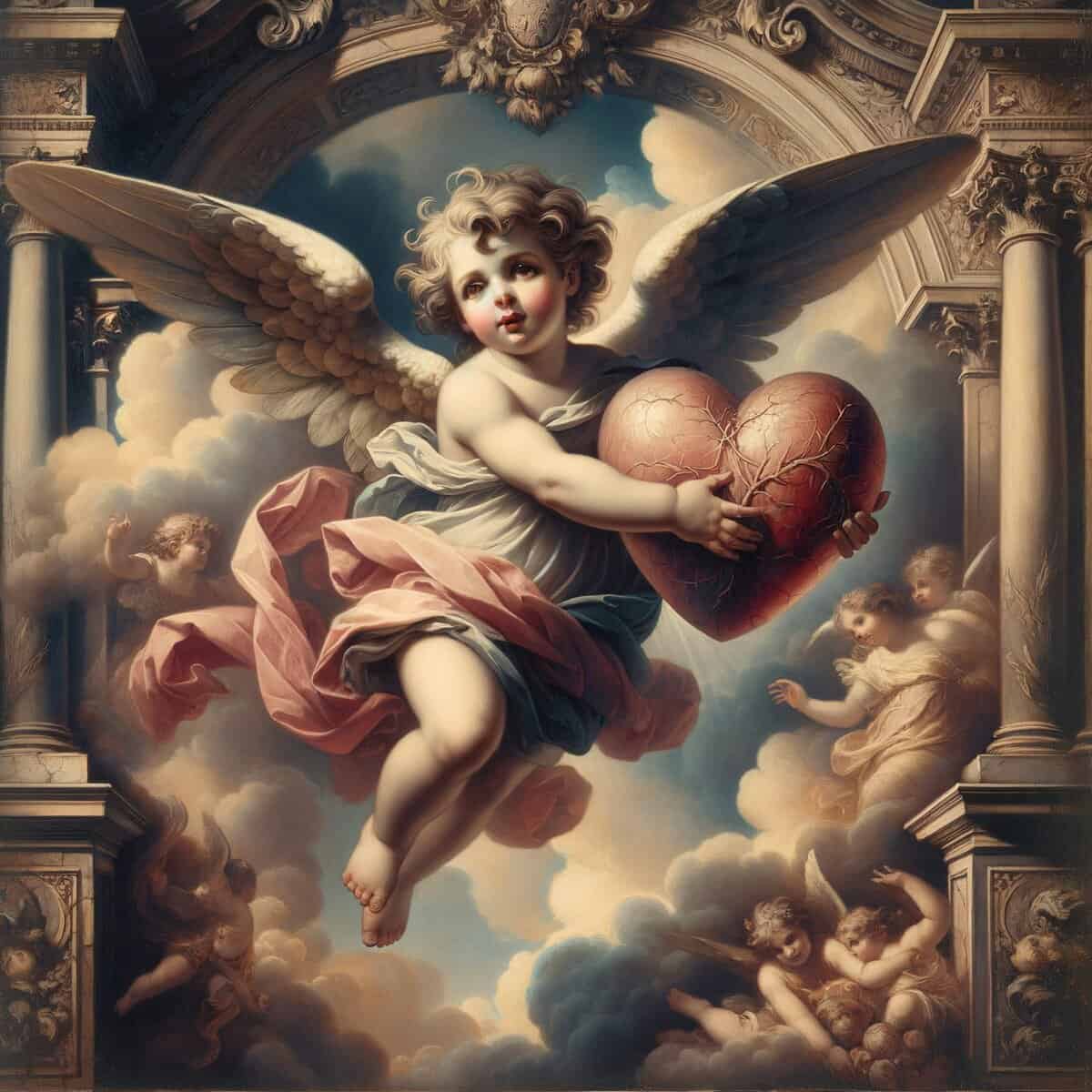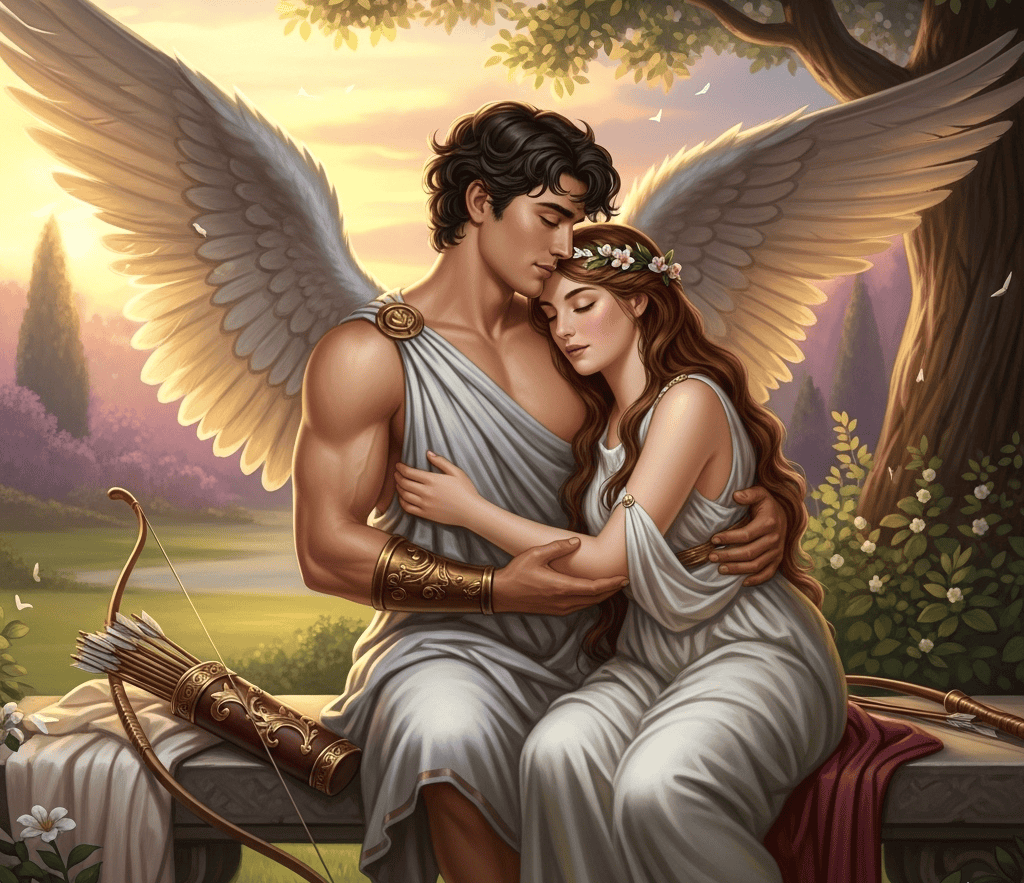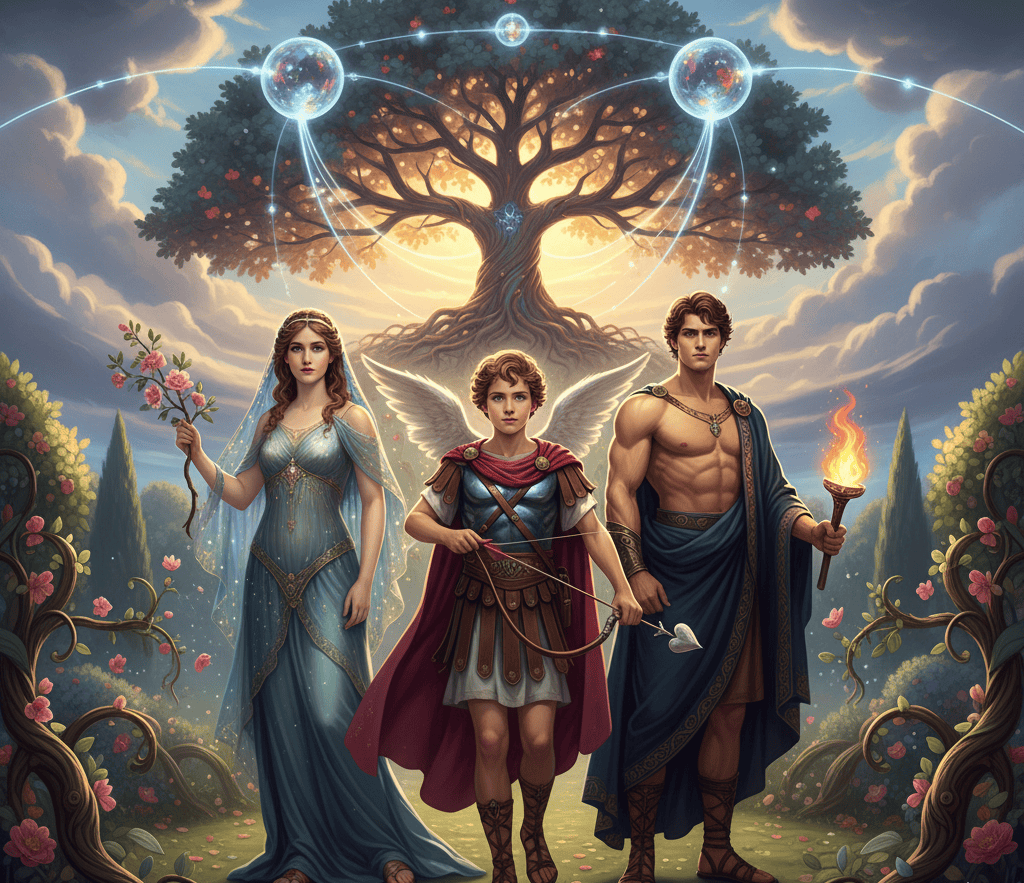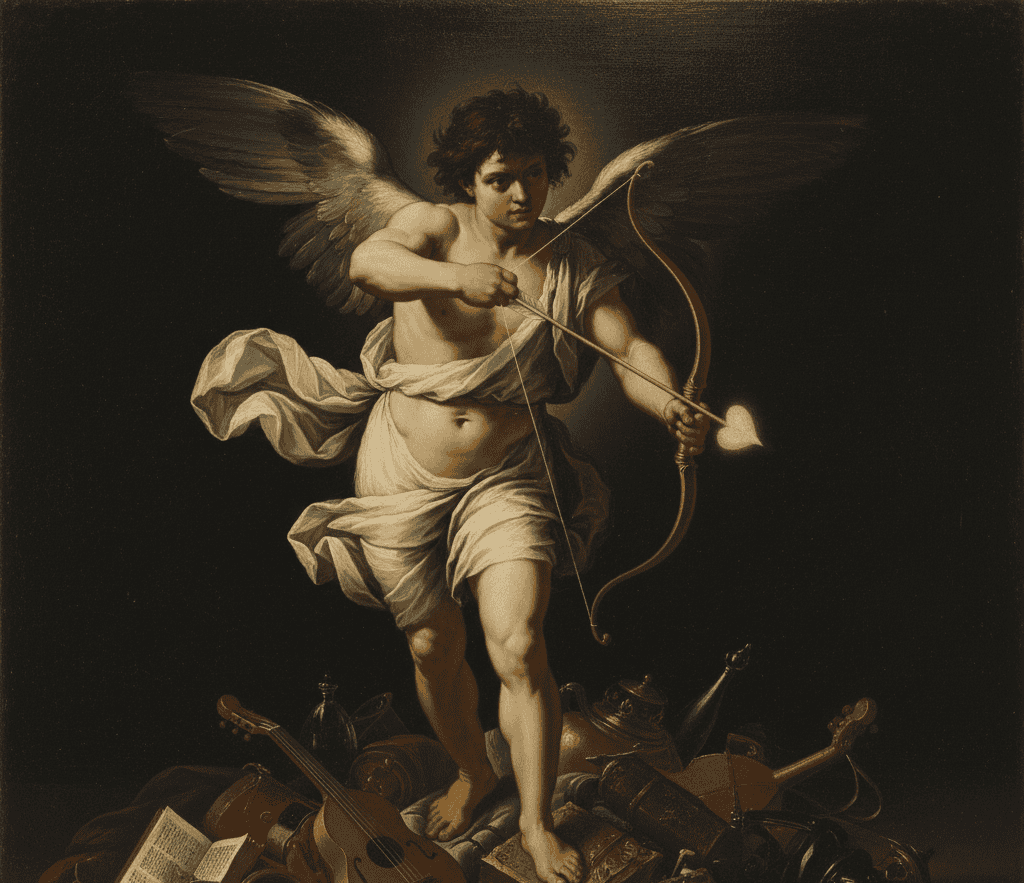Cupid is often pictured as a chubby little cherub floating around with a bow and arrow, shooting people into romance. That image shows up on Valentine’s cards, jewelry, and even cartoons.
But Cupid’s story in mythology is much more complex and surprising than the smiling baby we know today.
The Romans borrowed him from the Greek god Eros, and over centuries, he became one of the most famous symbols of love.
Here are ten things you probably didn’t know about Cupid that make him even more fascinating.
1. Cupid Wasn’t Always Cute and Small
When people think of Cupid, they imagine a tiny child with wings. But in early Greek myths, Eros – his original form – was not childlike at all.
He was a powerful, handsome young god who represented primal attraction and desire. Ancient art often showed him as tall and striking, holding his bow with confidence.
The cherubic Cupid came much later as artists softened his image, making him a symbol of innocence and playful romance rather than overwhelming passion.
2. His Mother Was the Goddess of Love Herself
Cupid’s mother was Venus, the Roman goddess of love and beauty. In the Greek version, his mother was Aphrodite.
This family connection gave Cupid incredible power over matters of the heart. It also made him mischievous, since Venus often used her son to stir up drama.
If Venus wanted someone to fall in love or be distracted by passion, she would send Cupid with his arrows. His bond with his mother shows how love, beauty, and desire were all deeply connected in mythology.
3. Cupid’s Arrows Came in Two Types
Most people know that Cupid shot arrows to make people fall in love. But mythology explains that not all of his arrows had the same effect.
Golden-tipped arrows caused irresistible attraction, making someone instantly infatuated. On the other hand, lead-tipped arrows created the opposite effect—repulsion or rejection.
This dual power made Cupid a figure of both joy and heartbreak. Love could blossom with one arrow, but another could destroy a bond just as quickly.
4. He Had a Legendary Love Story of His Own
Cupid wasn’t just a playful matchmaker—he also had his own dramatic romance. His most famous love story was with Psyche, a mortal woman whose beauty rivaled even Venus.
Their tale was filled with obstacles, secrecy, and trials, but in the end, Psyche’s devotion earned her immortality, and the two were united forever.
This myth wasn’t just about passion but also about trust and endurance. It shows that even Cupid himself had to fight for love, just like the people he influenced.
5. He Could Be Mischievous and Chaotic
Cupid didn’t always aim carefully. Sometimes he stirred up trouble on purpose. Myths tell of him shooting gods and mortals at random, causing unlikely romances that led to both comedy and chaos.
One famous example is when Cupid made Apollo fall madly in love with the nymph Daphne, who wanted nothing to do with him.
These stories highlight Cupid’s unpredictable side—love could strike anywhere, at any time, whether you wanted it or not.
6. He Was Often Depicted with Blindfolds
The idea of “love is blind” comes partly from Cupid’s imagery. In some artworks, Cupid wears a blindfold, suggesting that love does not depend on sight or reason.
The symbol reminds us that attraction can be unpredictable and irrational. People don’t always fall in love with who they expect, and Cupid’s blindfold captures that mystery.
It also shows that love isn’t only about physical beauty but about something deeper and unseen.
7. He Had Siblings with Powerful Roles
Cupid was not an only child. Depending on the myth, he had several siblings tied to emotions and desires. Some of his brothers and sisters represented harmony, longing, or even strife.
This family tree paints a picture of how the ancient world saw love – it wasn’t just simple romance but a web of feelings that could uplift or complicate life.
With siblings representing different sides of human connection, Cupid’s arrows often brought more than just happiness.
8. He Was Linked to Marriage Rituals
In Roman culture, Cupid was not just a playful god of attraction but also tied to marriage and family. Images of Cupid often appeared at weddings, carved into decorations or painted on walls.
His presence symbolized blessings for the couple, ensuring both passion and loyalty in their union.
People believed his arrows could bind partners together, keeping their love strong through the challenges of marriage.
9. Cupid Appears in Renaissance Art Everywhere
During the Renaissance, artists like Caravaggio and Raphael loved to paint Cupid. Sometimes he appeared playful, stealing honey or laughing at lovers.
Other times he looked powerful, emphasizing the force of desire. These paintings helped shape the modern image of Cupid as both innocent and mischievous.
His presence in art also shows how people through the ages never stopped being fascinated by the strange, sudden power of love.
10. Cupid Was Also Connected to the Soul
The story of Cupid and Psyche gave him a deeper meaning beyond playful romance. Psyche’s name means “soul” in Greek, and their union symbolized the bond between love and the human spirit.
Together, they embodied the idea that love transforms the soul, lifting it toward something higher.
This made Cupid more than just a figure of passion – he became a symbol of how love can guide personal growth and inner change.

Ho sempre sentito una forte connessione con il Divino fin dalla mia nascita. Come autrice e mentore, la mia missione è aiutare gli altri a trovare l'amore, la felicità e la forza interiore nei momenti più bui.


